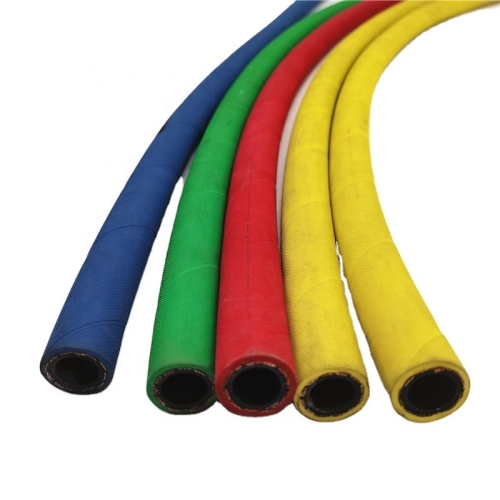12 月 . 04, 2024 16:36 Back to list
oil suction and discharge rubber hose
Understanding Oil Suction and Discharge Rubber Hoses Applications and Importance
Oil suction and discharge rubber hoses play a critical role in industrial applications, particularly in the oil and gas sector. These hoses are specifically designed to transport various liquids, especially oil and petroleum products, from one location to another. Their durability, flexibility, and resistance to harsh environments make them essential tools in many operations.
Construction and Characteristics
The construction of oil suction and discharge hoses typically involves multiple layers of materials, including rubber and fabric reinforcements. The inner layer is designed to be resistant to petroleum products while ensuring minimal permeability. The outer layer, on the other hand, is crafted to withstand abrasion, weathering, and other environmental factors. This layered approach ensures that the hoses can handle high pressures and large volumes of liquid, making them suitable for both suction and discharge applications.
One of the key characteristics of these hoses is their flexibility. Unlike rigid piping systems, rubber hoses can bend and stretch, allowing for easy maneuverability around obstacles and during transport. This flexibility is crucial in dynamic environments, such as construction sites or oil rigs, where space and configurations may change frequently. Additionally, these hoses can be fitted with various couplings and connectors, enhancing their versatility for different operational needs.
Applications
Oil suction and discharge hoses are prevalent in several applications. In the oil and gas industry, they are used for transferring crude oil from extraction sites to storage tanks or refineries. They are also instrumental in transferring refined products, such as gasoline or diesel, from distribution centers to filling stations.
oil suction and discharge rubber hose

In agriculture, these hoses facilitate the transfer of fertilizers and other liquid chemicals, ensuring that agricultural production runs smoothly. Furthermore, the chemical industry relies on similar hoses to move various liquids in their processes, highlighting the versatility of rubber hoses beyond just oil transport.
Safety Considerations
When working with oil suction and discharge hoses, safety is paramount. It's crucial to ensure that the hoses are properly rated for the type of oil or liquid being transported. Overloading a hose beyond its working pressure can lead to catastrophic failures, resulting in spills or leaks that can have significant environmental impacts.
Regular inspections are essential to identify signs of wear and tear. Cracks, bulges, or abrasion on the surface of the hose are indicators that it may need to be repaired or replaced. Additionally, employing proper protective measures, such as using hose guards or keeping hoses out of direct sunlight when not in use, can extend their lifespan.
Conclusion
In summary, oil suction and discharge rubber hoses are vital components in various industries, particularly the oil and gas sector. Their robust construction, flexibility, and ability to transport hazardous liquids safely make them indispensable tools. As industries continue to evolve, so too will the technology and materials used in hose manufacturing, ensuring that these crucial connectors meet the growing demands of safety, efficiency, and environmental responsibility. Therefore, understanding their applications and adhering to best practices is essential for anyone involved in industries that rely on these hoses.
-
EN857 2SC Hydraulic Hose Suppliers OEM & China Manufacturers
NewsMay.30,2025
-
51mm Hydraulic Hose Manufacturer China OEM Durable & Custom Solutions
NewsMay.30,2025
-
OEM Rubber Air Hose Supplier Durable Custom Solutions
NewsMay.29,2025
-
High-Pressure Wrapped Cover Steel Wire Spiral Hydraulic Hose Supplier
NewsMay.29,2025
-
Rubber water suction and discharge hose
NewsMar.07,2025
-
SAE 100 R6/EN 854 R6 Fibre Braided Oil Hose
NewsMar.07,2025



